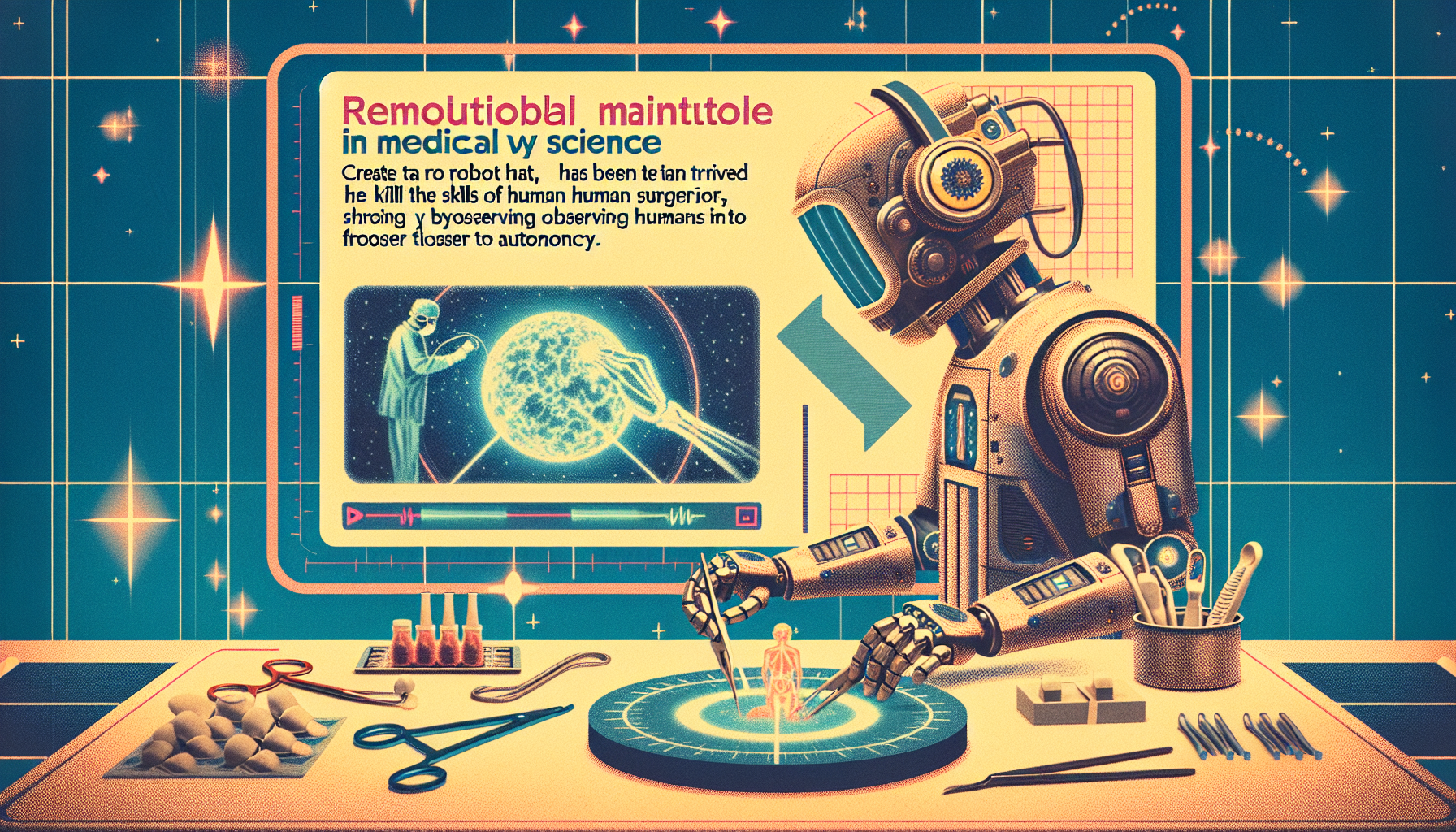In a remarkable milestone for medical science, a robot has been trained to rival the skills of human surgeons by simply watching them in action through video footage. This revolutionary development opens up new possibilities in medical robotics, steering it closer to full autonomy.
Imitation Learning: A New Frontier
Researchers at Johns Hopkins University and Stanford University have embarked on an innovative journey, utilizing imitation learning to train robots by observing surgical videos. Captured through wrist cameras on da Vinci Surgical System robots, these videos have replaced the painstaking task of programming detailed surgical moves.
Senior author Axel Krieger describes this advancement as nothing short of “magical,” where input from a camera allows the AI to predict necessary robotic movements during surgery. This approach significantly refines the training process, enhancing both the robot’s precision and adaptability.
Key Innovations and Training
During training, the robot mastered three critical tasks: manipulating needles, lifting tissue, and suturing. Impressively, its performance mirrored that of human surgeons. By focusing on the relative movements rather than exact actions, the model overcame input data imprecision from the da Vinci system.
Lead author Ji Woong “Brian” Kim explained the simplicity and efficiency of this method, affirming that “all we need is image input, and our AI system discovers the correct action.” Even with just a few hundred demonstrations, the model learned the procedures and adapted to unfamiliar environments.
Autonomy and Adaptability
The robot’s capacity to adapt to unplanned scenarios is particularly noteworthy. If it drops a needle, it autonomously retrieves it and continues the operation without human help—a skill learned solely through imitation learning.
Future Implications
This breakthrough represents significant potential for the future of robotic surgery. Previously, programming a robot for surgery was a laborious effort, sometimes spanning years or even decades. Now, imitation learning drastically reduces this timeline to mere days.
Axel Krieger stressed the transformative nature of this technology: “With imitation learning, we swiftly train robots while minimizing medical errors and enhancing surgical precision, bringing us closer to the ultimate goal of autonomy.”
Collaborative Effort
This achievement is the fruit of collaborative efforts. The team from Johns Hopkins University included PhD student Samuel Schmidgall, Associate Research Engineer Anton Deguet, and Associate Professor Marin Kobilarov. From Stanford University, PhD student Tony Z. Zhao contributed to this pioneering research.
Conclusion
A robot capable of performing surgical tasks with human-like expertise, trained by simply watching videos, marks a significant step forward in medical robotics. This development not only boosts the efficiency and accuracy of robotic surgeries but also points towards a future of fully autonomous procedures. By reducing medical errors and enhancing patient outcomes, this achievement highlights the transformative power of imitation learning, heralding a new era in healthcare innovation.

Leave a Reply